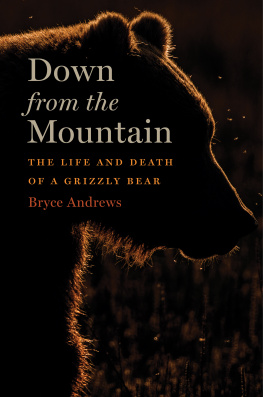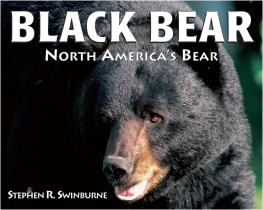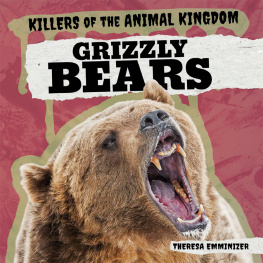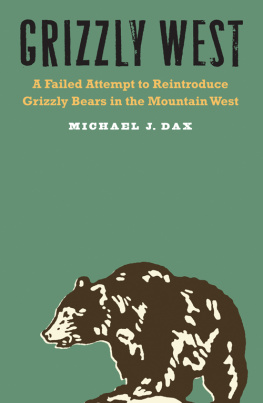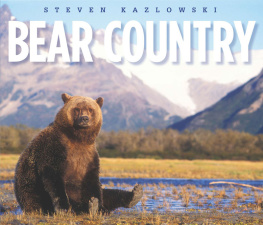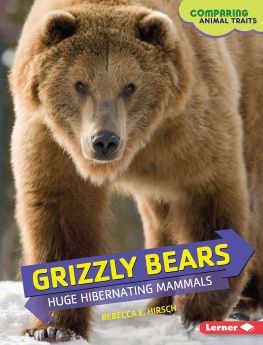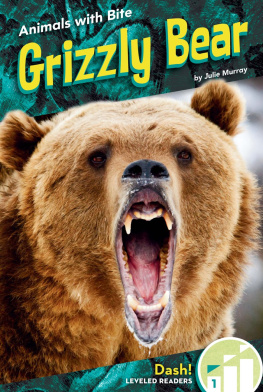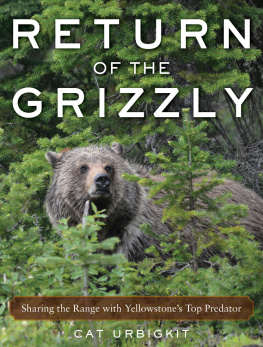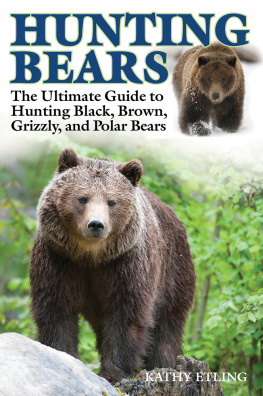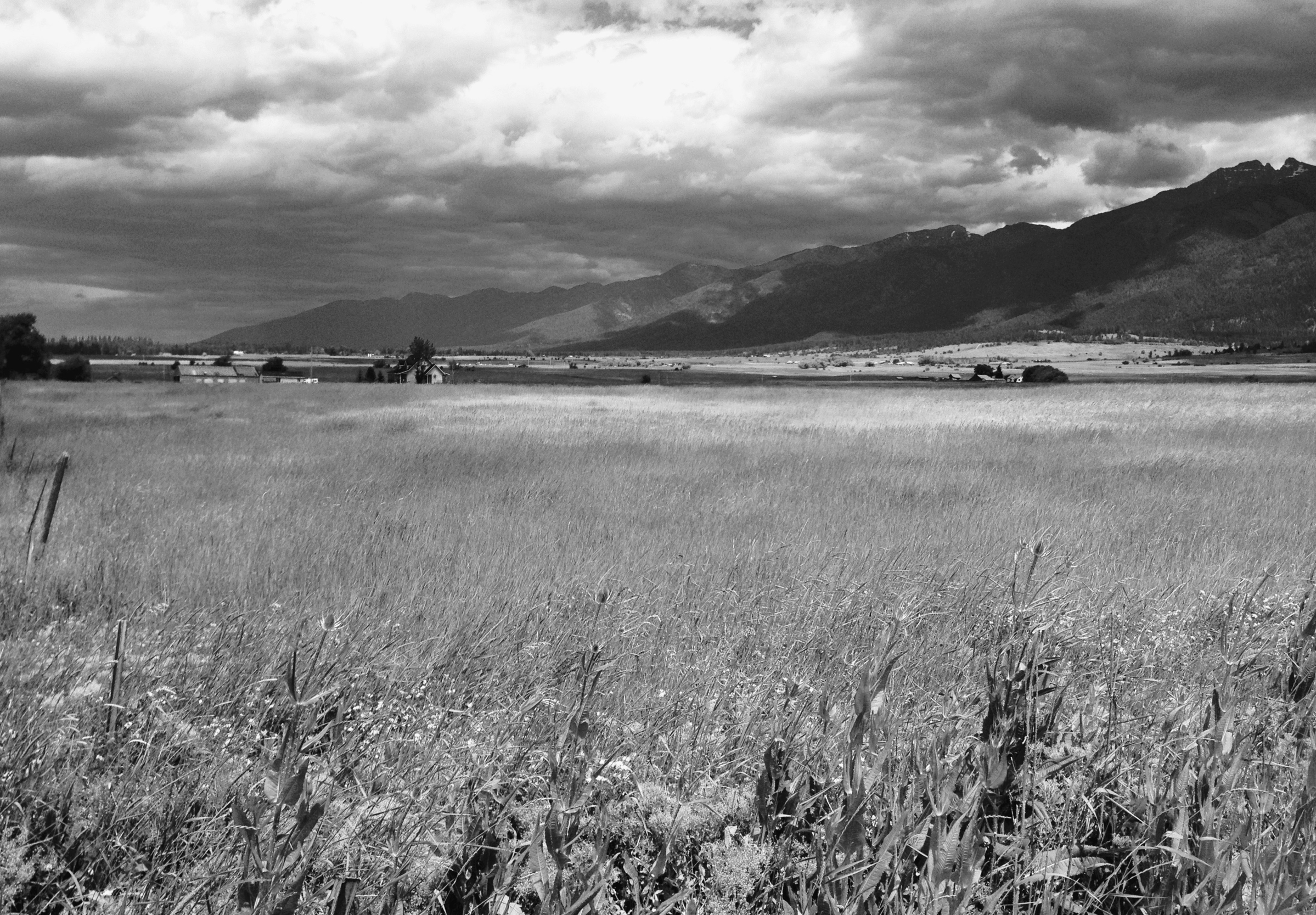Copyright 2019 by Bryce Andrews
All photographs are credited to the author with the exception of those on pages used by permission of Shannon Clairmont, CSKT Wildlife Biologist.
All rights reserved
For information about permission to reproduce selections from this book, write to or to Permissions, Houghton Mifflin Harcourt Publishing Company, 3 Park Avenue, 19th Floor, New York, New York 10016.
hmhbooks.com
Library of Congress Cataloging-in-Publication Data
Names: Andrews, Bryce, author.
Title: Down from the mountain : the life and death of a grizzly bear / Bryce Andrews.
Description: Boston : Houghton Mifflin Harcourt, 2019.
Identifiers: LCCN 2018033157 (print) | LCCN 2018048021 (ebook) | ISBN 9781328972477 (ebook) | ISBN 9781328972453 (hardcover)
Subjects: LCSH : Grizzly bearMontana. | Human-animal relationshipsMontana.
Classification: LCC QL 737. C 27 (ebook) | LCC QL737.C27 A5 36 2019 (print) | DDC
599.78409786dc23
LC record available at https://lccn.loc.gov/2018033157
Cover design by Martha Kennedy
Front jacket photograph Ingo Arndt / Minden Pictures / Getty Images
Author photograph Colleen Chartier
v1.0419
For two exceptional animals
1
The
Valley
Sheer peaks mark the eastern edge of Montanas Mission Valley. Gray Wolf, the southernmost, is a fist. East and West Saint Marys are shoulders without a head between them. Kakashe is a rampart, with higher pinnacles overtopping it from behind like breakers cresting a seawall. All are made of gray stone, with fissures, walls, and drops that give pause to the most intrepid climbers. They are quick to gather snow, slow in losing it through summer.
The mountains, which form the eastern margin of the Flathead Indian Reservation, shelter a healthy population of grizzly bears. As fall gives way to winter, these bears climb. Disappearing into well-hidden dens, they wait for spring.
Up there in February, it looks like nothing is passing but time, wind, and occasional ravens, but grizzlies are busy underground. In secret, deep-drifted nooks, they breathe and stir. Sows give birth in darkness.
Sometime around the year 2000it might have been a winter or two beforein a den smelling of earth and ursine rancidity, a cub was born. She probably had a sibling or two, as grizzlies are mostly born in pairs or trios. Until spring came, the writhing of her littermates and her mothers warmth were her whole world.
Though much is now known about that cubher life, movements, and the circumstances of her endno one can say precisely where or when she was born. It is enough to say that she was born in the high country, into a den that no human found or entered. In this, she was like most bears that have been born in the Missions since the recession of Pleistocene ice revealed mountains to the sun.
Emerging into spring, she was shown by a careful mother how to get about in the mountains. She learned which things were to be eaten and which were dangerous. In time, she descended with her mother across ridges and avalanche chutes toward the valley floor. Down in that settled, domesticated landscape, she smelled and saw human beings for the first time. She learned to be wary of gravel roads and highways and to move discreetly among farms and the scattered houses of rural subdivisions.
She slept one more winter in her mothers den, woke, and made the seasonal round as a yearling. Then, breaking with her family, she went out alone. She grew into adulthood, weighing nearly five hundred pounds and measuring three feet tall at the shoulder. Rising on her hind legs to pluck apples from a tree, she could reach higher than most people. Her forepaws were wide and black padded, and they hardened as she went about mapping the smells, contours, and hazards of her home range. She lived a grizzlys solitary life, and if she was seen at all by the men and women who lived in the valley, it was as a disappearing flash or a shadow against the night.
In 2002 , in the blue light that follows dusk in late summer, she left off foraging and walked down from the foothills into a tangled aspen grove. Crossing Millies Woodsthe copse for which shed soon be namedthe bear came to a place where she could see farmstead lights spread across the floor of the Mission Valley, glittering like shards of a bottle dropped from a great height.
While darkness thickened, she shuffled along a well-worn game trail, giving a generous berth to barnyards and houses. Hearing the faraway barking of dogs, she kept to the low ground of potholes and sloughs.
She came in search of ripening apples and the chokecherries weighing down the branches along the banks of irrigation canals. Descending step by cautious step, keeping pace with the night, she left the Mission Range behind. In doing so, she walked out of a wilderness that has remained essentially unchanged since the end of the last ice age, and into an unforgiving arcadia. The primeval valleythe fertile, deep soil that had succored native people and grizzly bears for thousands of yearswas hidden by roads, power lines, prefabricated ranch-style houses, tilled fields, and uncountable miles of barbwire fence.
Cars and trucks hurtled day and night along Highway 93. Except for the timbered corridors along streams, the land was settled, cleared, and cropped. There were pastures and hayfields, gardens and chicken coops, pigsties, grain bins, and trash pilesall manner of things that could lead a bear into conflict with people or livestock, and therefore to ruin. The farms were small by Montana standards, with most holdings measuring between twenty and eighty acres. The landscape was not paved over or entirely ruined for a grizzly bears purposes, as parts of the Missoula and Bitterroot valleys are, but it was a difficult, dangerous place to survive.
She passed near Schocks Mission View Dairy, a family operation with a ramshackle milking parlor and a wide yellow Quonset barn. Crossing behind the buildings, she heard the thick-voiced lowing of cows. She kept clear of it all, padding northward toward the shelter of a brushy stream. Nearing East Post Creek Road, she came to where the Schock family had planted their first field of silage corna crop that would be harvested to feed dairy cows through winter. Crossing gravel, leaving long-clawed tracks in the borrow ditches, she slipped in among the stalks.
Corn closed around on all sides, stillness descended, and broad leaves hissed across her shoulders. Ripe ears tapped her muzzle. With the fantastic acuity of a bears nose, she smelled a faint sweetness all around. Instead of shambling ahead toward the half-wild, overgrown orchards along Post Creek, she stopped. Stretching out a forepaw, the sow snapped off a cornstalk at the base. Sitting back on her haunches, laboring delicately with paws strong enough to break the spine of an elk, she brought an ear to her mouth and chewed.
She tasted pulped kernels, husk, and silk. White-gold liquid dripped from her lips. With three-inch-long claws working as precisely as forceps, she husked another ear. The corn was as endless as her hunger, and under the pale moon, she gorged to the cusp of bursting. When she could hold no more, she rested. The field seemed a good, safe place at night. Though she retreated to the mountains before daylight, she returned again at dusk.
Every year, a bear must solve a simple but unforgiving problem: Coming out of hibernation as thin as a rail, each grizzly must gain enough weight in the months between April and November to last through winter. From a bears perspective, the cornfield offered a perfect solution: an infinite, carbohydrate-rich source of food that ripened just as summer became fall. Having discovered the crop, the sow could no more desert it than stop breathing. There were other sources of foodapples, plums, and accumulations of insects high in the peaksbut she always returned to the corn. Nothing else was as sure or as plentiful. She frequented the field, and other grizzlies joined her. Yearlings, adrift from their mothers, blundered across the crop. Ponderous full-grown boars lumbered into the field and began to eat. Sows arrived with their new cubs, sought secluded corners, and fed.

